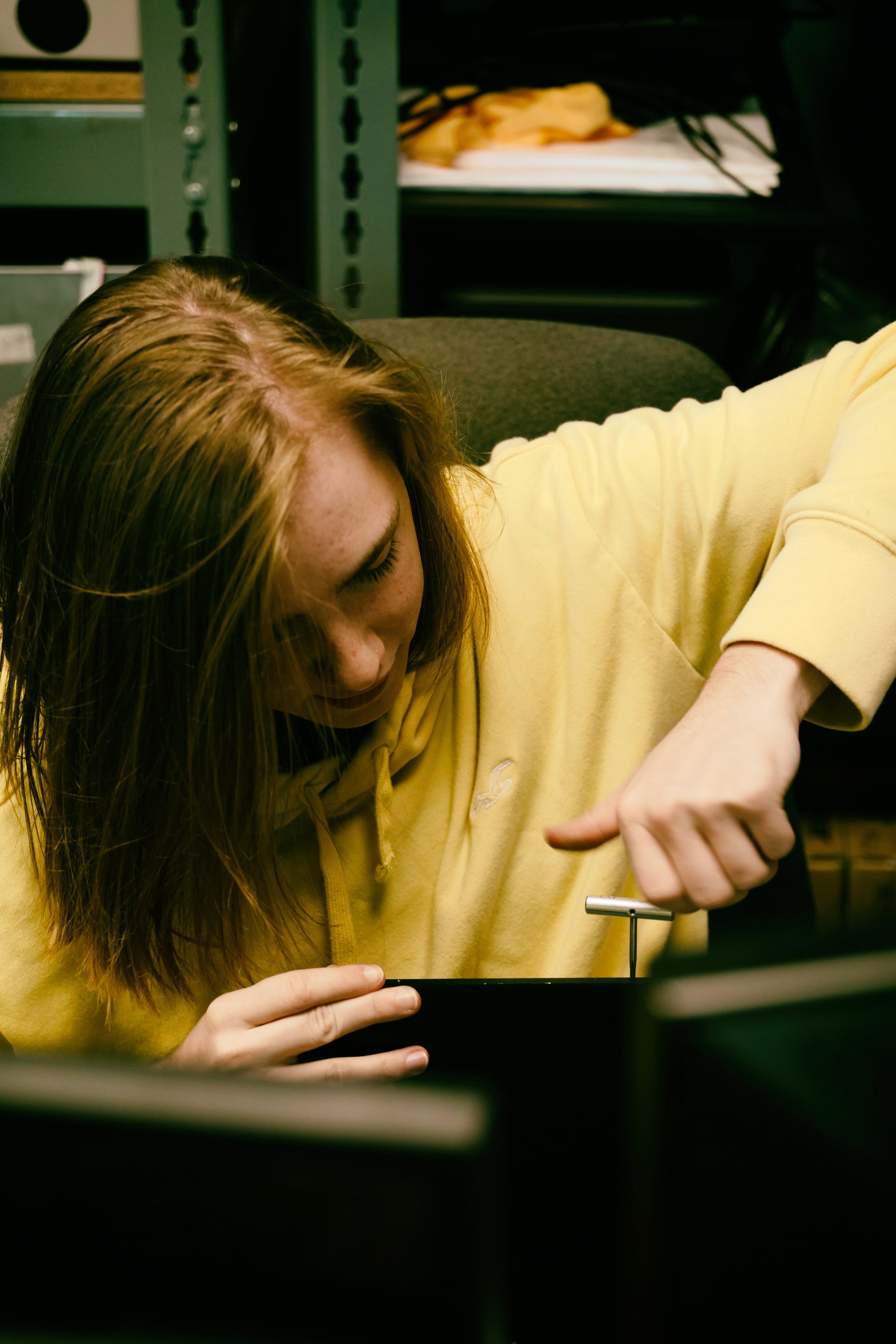What Does Uv/vis/nir Mean?
What Does Uv/vis/nir Mean?
Blog Article
The 2-Minute Rule for Spectrophotometers
Table of ContentsRumored Buzz on Circular DichroismThe Definitive Guide to SpectrophotometersAn Unbiased View of Spectrophotometers4 Simple Techniques For Uv/visMore About Circularly Polarized LuminescenceThe Facts About Spectrophotometers RevealedFascination About SpectrophotometersOur Spectrophotometers StatementsCircular Dichroism for BeginnersWhat Does Uv/vis Do?How Circular Dichroism can Save You Time, Stress, and Money.4 Easy Facts About Circular Dichroism ShownThe Best Guide To Circularly Polarized Luminescence
It is then scanned through the sample and the reference options. Portions of the incident wavelengths are transmitted through, or shown from, the sample and the referral. Electronic circuits transform the relative currents into linear transmission percentages and/or absorbance/concentration worths.The transmission of a reference substance is set as a baseline (datum) worth, so the transmission of all other substances are recorded relative to the initial "zeroed" compound. The spectrophotometer then transforms the transmission ratio into 'absorbency', the concentration of specific components of the test sample relative to the preliminary substance.
Since samples in these applications are not readily offered in big amounts, they are specifically fit to being analyzed in this non-destructive technique. In addition, valuable sample can be conserved by utilizing a micro-volume platform where as low as 1u, L of sample is required for complete analyses. A short description of the treatment of spectrophotometry includes comparing the absorbency of a blank sample that does not consist of a colored compound to a sample which contains a colored substance.
The Facts About Circular Dichroism Uncovered
In biochemical experiments, a chemical and/or physical home is selected and the treatment that is used is particular to that residential or commercial property in order to obtain more info about the sample, such as the quantity, purity, enzyme activity, and so on. Spectrophotometry can be utilized for a number of strategies such as figuring out optimal wavelength absorbance of samples, identifying optimum p, H for absorbance of samples, identifying concentrations of unidentified samples, and determining the p, Ka of numerous samples.: 21119 Spectrophotometry is also a handy procedure for protein filtration and can likewise be utilized as a technique to develop optical assays of a compound.
It is possible to know the concentrations of a 2 element mixture utilizing the absorption spectra of the standard services of each part. To do this, it is necessary to understand the extinction coefficient of this mixture at two wave lengths and the extinction coefficients of services that consist of the recognized weights of the 2 components.

Some Known Details About Uv/vis/nir
Region. The concentration of a protein can be estimated by measuring the OD at 280 nm due to the presence of tryptophan, tyrosine and phenylalanine.
This technique requires a spectrophotometer capable of measuring in the UV region with quartz cuvettes.: 135 Ultraviolet-visible (UV-vis) spectroscopy involves energy levels that excite electronic transitions. Absorption of UV-vis light excites particles that are in ground-states to their excited-states.
20. 8 O.D. Ink makers, printing companies, fabrics vendors, and lots of more, require the data offered through colorimetry. They take readings in the region of every 520 nanometers along the noticeable region, and produce a spectral reflectance curve or an information stream for alternative discussions. These curves can be utilized to check a new batch of colorant to check if it makes a match to requirements, e.
Some Of Spectrophotometers
Traditional visible region spectrophotometers can not find if a colorant or the base material has fluorescence. This can make it challenging to manage color issues if for example one or more of the printing inks is fluorescent. Where a colorant includes fluorescence, a bi-spectral fluorescent spectrophotometer is utilized (https://www.cybo.com/US-biz/on-line-instrument-systems-olis-inc). There are 2 major setups for visual spectrum spectrophotometers, d/8 (round) and 0/45.
Researchers use this instrument to measure the amount of compounds in a sample. In the case of printing measurements 2 alternative settings are frequently used- without/with uv filter to manage much better the impact of uv brighteners within the paper stock.
Not known Facts About Spectrophotometers
Some applications need small volume measurements which can be carried out with micro-volume platforms. As explained in the applications section, spectrophotometry can be used in both qualitative and quantitative analysis of DNA, RNA, and proteins. Qualitative analysis can be used and spectrophotometers are utilized to record spectra of compounds by scanning broad wavelength regions to figure out the absorbance residential or commercial properties (the strength of the color) of the substance at each wavelength.

Excitement About Spectrophotometers
One significant element is the type of photosensors that are offered for various spectral areas, but infrared measurement is also tough due to the fact that essentially whatever emits IR as thermal radiation, particularly at wavelengths beyond about 5 m. Another problem is that rather a couple of materials such as glass and plastic take in infrared, making it incompatible as an optical medium.
Obtained Dec 23, 2018. Basic Lab Methods for Biochemistry and Biotechnology (Second ed.). The vital guide to analytical chemistry.
Chichester, NY: Wiley. pp. 1617. ISBN 9780471974123. OCLC 36543293. Ninfa AJ, Ballou DP (2004 ). Fundamental laboratory approaches for biochemistry and biotechnology. Hoboken: Wiley. p. 66. ISBN 9781891786006. OCLC 633862582. Rendina G (1976 ). Philadelphia, PA: W. B. Saunders Company. pp. 46-55. ISBN 0721675506. OCLC 147990. Oke, J. B.; Gunn, J. E.
The Definitive Guide to Uv/vis
"Secondary basic stars for absolute spectrophotometry". The Astrophysical Journal. 266: 713. Bibcode:1983 Ap, J..266..713 O. doi:10. 1086/160817. Ishani, G (2006 ). "The first commercial UV-vis spectrophotometer". p. 100. Retrieved Dec 23, 2018. Simoni, RD; Hill, RL; Vaughan, M; Tabor, H (Dec 5, 2003). "A Classic Instrument: The Beckman DU Spectrophotometer and Its Inventor, Arnold O.
278 (49 ): e1. doi:. ISSN 1083-351X. Beckman, A. O.; Gallaway, W. S.; Kaye, W.; Ulrich, W. F. (March 1977). "History of spectrophotometry at Beckman Instruments, Inc". Analytical Chemistry. 49 (3 ): 280A300A. doi:10. 1021/ac50011a001. "Hewlett Packard: Substance Identification with HP 8450 A UV Noticeable Spectrophotometer". Analytical Chemistry. 51 (12 ): 1188A1189A. 1979-10-01.
1021/ac50048a728. ISSN0003-2700. Ninfa AJ, Ballou DP, Benore M (2015 ). Basic Lab Approaches for Biochemistry and Biotechnology (3, rev. ed.). Hoboken, NJ: Wiley & Sons. p. 77. ISBN9780470924525. OCLC915641828. "Completely Automatic Double Beam - Atomic Absorption Spectrophotometer (AA 8000)". Laboratory Devices. Labindia Analytical Instruments Pvt. Ltd. "Spectrophotometry Applications and Fundamentals".
Indicators on Circularly Polarized Luminescence You Need To Know
Retrieved Jul 4, 2018. Trumbo, Toni A.; Schultz, Emeric; Borland, Michael G.; Pugh, Michael Eugene (April 27, 2013). "Applied Spectrophotometry: Analysis of a Biochemical Mixture". Biochemistry and Molecular Biology Education. 41 (4 ): 24250. doi:10. 1002/bmb. 20694. PMID 23625877. (PDF). www. mt.com. Mettler-Toledo AG, Analytical. 2016. Recovered Dec 23, 2018. Cortez, C.; Szepaniuk, A.; Gomes da Silva, L.
"Exploring Proteins Filtration Strategies Animations as Tools for the Biochemistry Mentor". Journal of Biochemistry Education. 8 (2 ): 12. doi:. Garrett RH, Grisham CM (2013 ). Biochemistry. Belmont, CA: Cengage. p. 106. ISBN 978-1133106296. OCLC 801650341. Vacation, Ensor Roslyn (May 27, 1936). "Spectrophotometry of proteins". Biochemical Journal. 30 (10 ): 17951803. doi:10. 1042/bj0301795.
PMID 16746224. Hermannsson, Ptur G.; Vannahme, Christoph; Smith, Cameron L. C.; Srensen, Kristian T.; Kristensen, Anders (2015 ). "Refractive index dispersion picking up using a variety of photonic crystal resonant reflectors". Applied Physics Letters. 107 (6 ): 061101. Bibcode:2015 Ap, Ph, L. 107f1101H. doi:10. 1063/1. 4928548. S2CID 62897708. Mavrodineanu R, Schultz JI, Menis O, eds.
Indicators on Circularly Polarized Luminescence You Should Know
U.S. Department of Commerce National Bureau of Standards unique publication; 378. Washington, D.C.: U.S. National Bureau of Standards. p. 2. OCLC 920079.
The procedure starts with a regulated light source that illuminates the evaluated sample. When it comes to reflection, as this light interacts with the sample, some is absorbed or discharged. The discharged light journeys to the detector, which is examined, measured, and presented as industry-standard color scales and indices.
All terms are evaluated over the visible spectrum from 400 to 700 nm. In the case of transmission, when the light connects with the sample, it is either taken in, shown, or transmitted.
See This Report about Circularly Polarized Luminescence
Examples consist of APHA (American Public Health Association) for watercolor and purity analysis, ASTM D1500 for petrochemical color analysis, edible oil indices used in food, and color analyses of beverages. The simplified math looks like this:. Where T is the transmission coefficient. All terms are assessed over the noticeable spectrum from 400 to 700 nm.
Image Credit: Matej Kastelic/ Dr. Arnold J. Beckman and his associates at the National Technologies Laboratories initially developed the spectrophotometer in 1940. In 1935 Beckman established the business, and the discovery of the spectrophotometer was their most ground-breaking development.
The Ultimate Guide To Circularly Polarized Luminescence
Over time, scientists kept improving the spectrophotometer design to enhance its performance. The UV capabilities of the design B spectrophotometer were enhanced by changing the glass prism with a quartz prism.
After 1984, double-beam versions of the gadget were designed. The addition of external software application with the arrangement of onscreen display screens of the spectra can be found in the 1990s. Usually, a spectrophotometer is comprised of 2 instruments, specifically, a spectrometer and a photometer. A fundamental spectrophotometer contains a light source, a monochromator, a collimator for straight beam transmission, a cuvette to place a sample, and a photoelectric detector.
The 7-Second Trick For Circularly Polarized Luminescence
There are various types of spectrophotometers in numerous sizes and shapes, each with its own purpose or performance. A spectrophotometer figures out how much light is shown by chemical elements. circularly polarized luminescence. It measures the difference in light strength based on the overall amount of light introduced to a sample and the quantity of light beam that passes through the sample solution
As per the instrument's design, the sample is put in between the spectrometer and the photometer. After the light is travelled through the sample, the photometer measures its strength and displays the reading. A spectrophotometer is utilized to determine the concentration of both colorless and colored solutes in an option. This instrument is used to identify the rate of a reaction.
Report this page